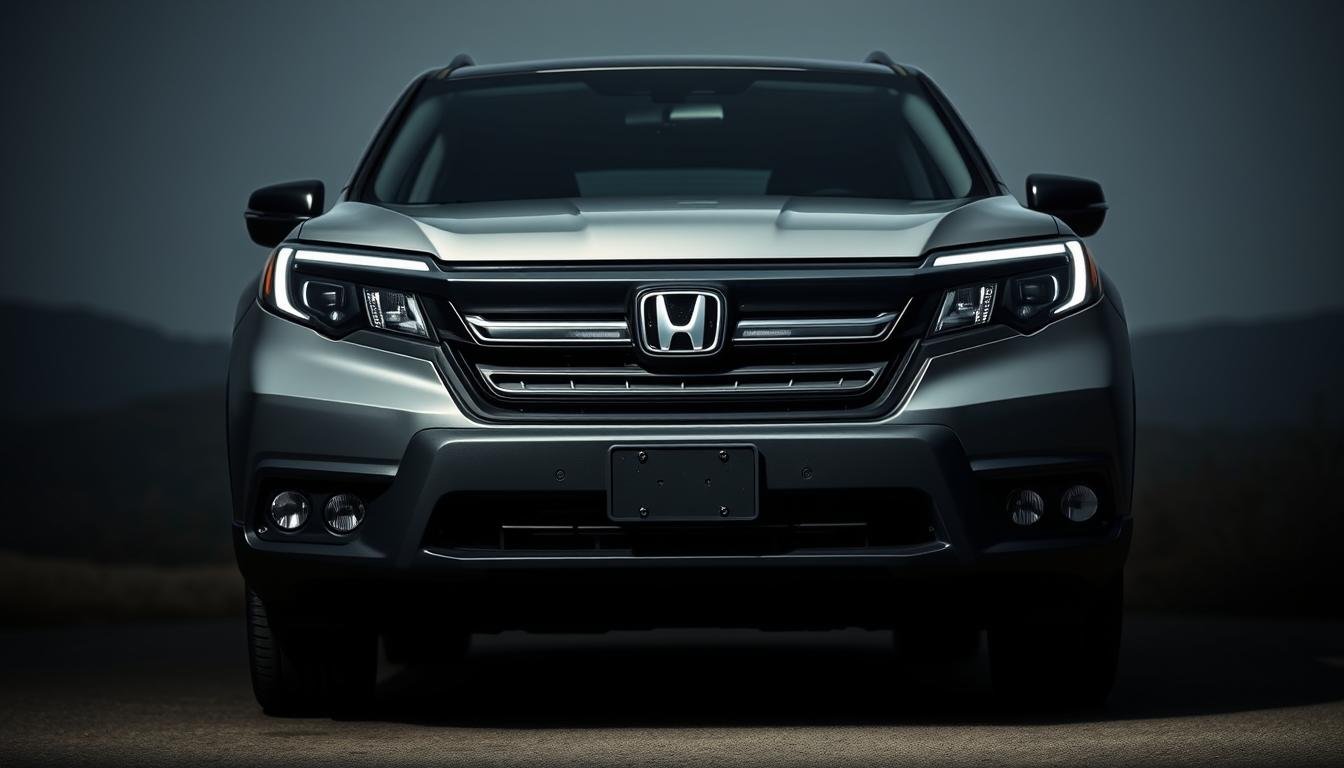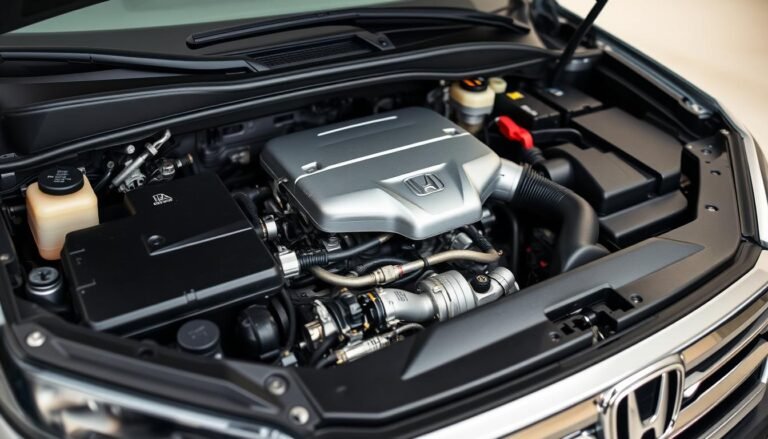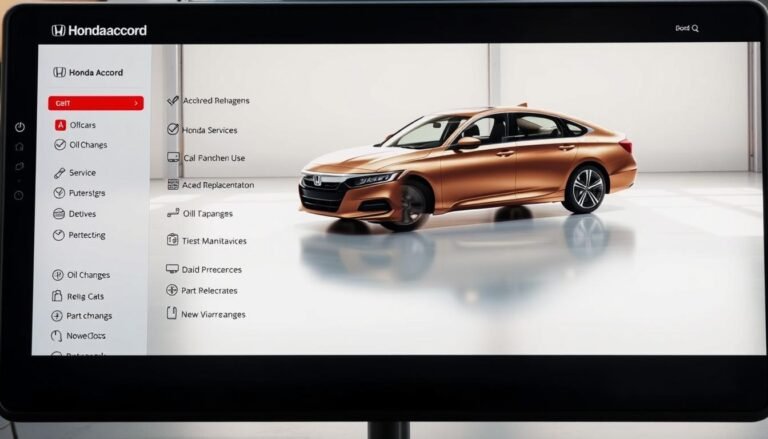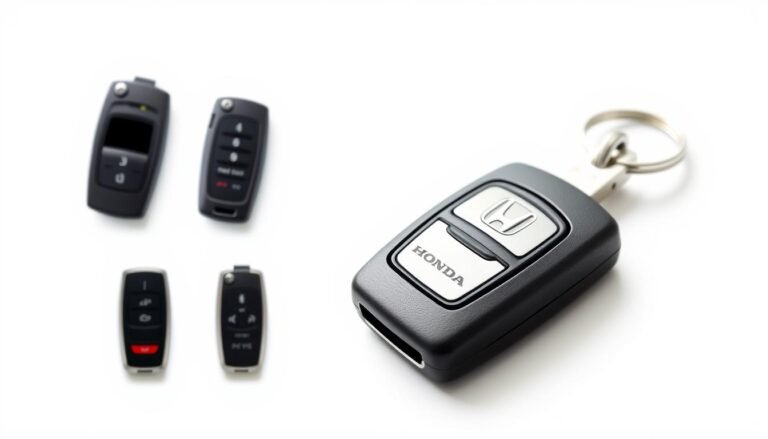Honda Passport Years to Avoid?Better 7 Buyer’s Guide
Some Honda Passport years should be avoided due to major reliability problems. These mostly include issues with frame rust and gearbox troubles.
When considering a used Honda Passport, knowing which years to stay away from helps avoid expensive fixes.
This guide provides used Honda Passport buying tips, using data and buyer reviews. The Passport faced issues right from its 1993 launch, with certain years being more problematic.
These problems negatively impacted both performance and safety. By the end of this guide, you’ll know the years to steer clear of.
Plus, how to spot the reliable Honda Passport models that are worth your money. We’re here to help make your next car buy a smart choice.
Introduction To The Honda Passport
The Honda Passport was first introduced in 1994 as Honda’s very first SUV. It quickly made its mark in the world of Honda SUVs.
Running until 2002, its first generation proved Honda’s dedication to making diverse and versatile vehicles.
Then, after a short break, the Passport came back in 2018, showing how Honda has evolved to meet new market needs.
The main things that make the Honda Passport stand out are its roominess, practical use, and dependability. These qualities have made it very popular among SUV buyers.
Over the years, Honda has listened to its customers and used new technology to improve the Passport.
This history, filled with design updates and safety improvements, has made the Passport a strong choice in the SUV market.
What is Honda Passport Generations?
The Honda Passport has evolved through three distinct generations. Each has its own set of strengths and areas to improve.
The first generation, which spanned from 1994 to 1997, was known for being sturdy and reliable. It featured a tough design that many buyers liked.
Yet, the 1995 model had some issues that future owners should note. From 1998 to 2002, the second generation faced tough challenges.
Problems like frame rust and transmission failures were common. These issues raised doubts about the car’s reliability.
This time period showed Honda needed better quality control and to focus more on satisfying customers.
The third generation started in 2018 and brought big changes in design and tech. It aims to fix past problems while updating the car with the latest features.
With improved performance and safety, the newest Honda Passport is a strong choice for car lovers and families.

Common Honda Passport Known Issues
The Honda Passport is known for being practical and functional. But it does have some common issues, especially in the second generation.
Some major problems include frame rusting that can weaken the car and transmission failures that may impact how well it drives.
The 1998 and 1999 models have some of the biggest problems reported by owners. These issues often lead to expensive repairs.
Even though newer models are more reliable, it’s important to know about these problems when looking at a used Passport.

| Model Year | Common Issues | Severity Level |
|---|---|---|
| 1998 | Severe frame rusting, transmission failure | High |
| 1999 | Suspension complaints, rust issues | Moderate |
| 2000 | General mechanical failures | Low |
| 2001 | Improved reliability, fewer issues | Low |
Knowing about these Honda Passport issues can help you make a smart choice. It will guide you in picking the best used Passport model year for you.
Honda Passport Years To Avoid
If you’re thinking about getting a Honda Passport, you should know which years to avoid. The 1995 model and the years from 1998 to 2001 have had a lot of issues.
These problems can make owning one a headache. It’s smart to check these years carefully before you decide to buy.
1995 Model Year Issues
The 1995 Honda Passport is known to have several issues with its body. Problems like rusting and poor paint quality can harm the car’s looks and durability.
People who own this car have often found it costs more to maintain and they are less happy with it.
1998 to 2001 Concerns
The second-generation Passports, from 1998 to 2001, have even bigger problems. They often have serious rust on the frame and their transmissions fail a lot.
The 1999 model is especially problematic, with lots of brake complaints and body concerns.
If you’re thinking about a Passport from these years, make sure to look into it closely.

Reliability Concerns by Model Year
When you’re considering the Honda Passport, it’s important to know about reliability concerns.
By looking at different model years, you can see how the strengths and weaknesses change.
Each Honda Passport generation comes with its own set of challenges. It’s important to know these before buying one.
First Generation Reliability
The first generation, from 1994 to 1997, is known for being reliable. Though there are a few minor issues, these cars are well-built and perform well.
Owners note that major problems are rare, which makes them a solid choice for those who want a dependable car.
Second Generation Challenges
The second generation, between 1998 and 2002, had more reliability issues. This period saw structural and significant transmission problems that impacted the car’s performance.
If you’re thinking about buying one of these, be careful. These issues can mean expensive repairs and a shorter life for the car.
Third Generation Improvements
In 2003, the third generation brought better reliability. Honda worked hard to fix the problems of earlier models.
The newer cars usually get good reviews and have fewer reliability issues. Better engineering has made this generation a popular choice among those looking for a used Honda Passport.

Specific Problems in Problematic Honda Passport Years
Many early Honda Passport models have big issues that need attention. These problems include transmission issues and frame rusting.
It’s key to tackle these problems early to avoid big costs and time loss.
Transmission Failures
Transmission failures are common in 1998-2001 Honda Passports. Owners often face expensive repairs, sometimes costing thousands.
Signs like slipping, rough shifting, and strange noises are warnings. These warnings signal it’s time for a closer look.
Frame Rusting and Safety Risks
Honda Passport frame rusting is a big safety issue. Rust can weaken the car’s structure, harming handling and risking disaster.
Drivers in places with lots of road salt have reported the worst rust. Always check the frame for rust to keep safe.
| Issue Type | Model Year | Common Symptoms | Estimated Repair Costs |
|---|---|---|---|
| Transmission Failure | 1998-2001 | Slipping, rough shifting, noise | $2,000 – $4,000 |
| Frame Rusting | 1998-2001 | Deteriorating handling, structural failure | $500 – $3,000 (depending on extent) |
Cost of Repairs For Honda Passport Issues
Owning a Honda Passport can sometimes be costly, especially when it comes to repairs. It’s very important to know how much you might spend on fixing your car.
Older models of the Honda Passport can have some big issues. For example, fixing a transmission could cost more than $4,000, depending on the damage.
Another big issue is frame rusting. Early signs of rust can be fixed starting at about $1,000.
But if you wait too long, it could cost a lot more. Knowing these costs can help Honda Passport owners plan their budgets better.
| Issue | Estimated Repair Cost |
|---|---|
| Transmission Repair | $4,000+ |
| Frame Rust Repair (early issues) | $1,000+ |
| Frame Rust Repair (extensive damage) | $3,000+ |
| Electrical System Repair | $500 – $1,500 |
| Brake System Repair | $300 – $1,000 |
Best Years For Honda Passport To Consider
When looking for the best Honda Passport years, focus on those with top reliability ratings.
Models from 2019 and later are known for their great performance and safety. Choosing these years will make your driving experience much better.
Most Reliable Models
- 2019 Honda Passport
- 2020 Honda Passport
- 2021 Honda Passport
- 2022 Honda Passport
Features of Successful Years
The best Passport models, starting in 2019, have many features that improve driving:
- Advanced driver-assist technology
- Efficient engines with improved fuel economy
- Spacious and versatile interior layout
What To Look For When Buying A Used Honda Passport
Conducting a thorough inspection is key when buying a used Honda Passport. Get familiar with these tips that will guide your assessment.
- Frame Condition: Look for signs of frame rust, which can indicate underlying structural issues.
- Transmission Performance: Test the transmission for smooth shifting. Listen for any unusual noises during operation.
- Service History: Review the vehicle’s service history to assess how well it has been maintained. Look for any major repairs or frequent issues.
- Recall Status: Ensure that all recalls have been addressed. This information can often be checked through official Honda resources.
- Vehicle History Report: Request a detailed report to discover any previous accidents or major repairs that could affect the vehicle’s reliability.
Evaluating these areas is critical when checking a used Honda Passport. Follow these guidelines to make a well-informed purchase.
| Inspection Area | What to Look For | Importance |
|---|---|---|
| Frame Condition | Signs of rust or damage | Critical for safety and durability |
| Transmission | Smooth shifting without noises | Ensures reliable performance |
| Service History | Maintenance records and reports | Indicates overall care of the vehicle |
| Recall Status | Addressed open recalls | Affects safety and performance |
| Vehicle History Report | Accident and repair history | Provides insights on potential issues |
Maintaining Your Honda Passport
Taking good care of your Honda Passport is key to keeping it running well. By following simple maintenance tips, you can avoid costly repairs later.
Make oil changes a top priority to keep the engine in good shape. Checking your brakes and fluids regularly is crucial for your car’s health.
Fix small problems early to prevent big ones later. Ignoring these could lead to expensive damage and put your safety at risk.
Try not to drive too hard on rough terrains, especially with older models. This can wear your car out faster. Keeping it clean and safe from the weather helps keep its value.
Creating a schedule for regular checks is a smart move. This way, you can be confident that your Honda Passport is always ready for the road ahead.
| Maintenance Task | Frequency | Importance |
|---|---|---|
| Oil Change | Every 5,000 miles | Essential for engine health |
| Brake Inspection | Every 12,000 miles | Critical for safety |
| Tire Rotation | Every 6,000 miles | Promotes even wear |
| Fluid Checks | Every 3,000 miles | Maintains performance |
| Battery Inspection | Every year | Ensures reliability |
Conclusion
Knowing which Honda Passport years to avoid is key to a smart buy. This guide points out the need to steer clear of models with frequent frame rust and transmission failures.
Avoiding these issues means fewer expensive repairs and a more reliable ride. The latest Honda Passport models come with better performance and new features.
Think about these upgrades and if they fit what you need. This guide gives you a clear idea of what to watch out for, helping you pick the right SUV.
In short, this guide helps you pick a Honda Passport that won’t let you down. It underlines the value of doing your homework before buying.
This way, you get to enjoy the dependability and quality the Honda brand is known for.
FAQs
Q: What years of the Honda Passport should I avoid due to reliability concerns?
A: Stay away from the 1995 model year. Also, avoid the second generation from 1998 to 2001, because of frame rust and transmission issues.
Q: What are some common problems reported with the Honda Passport?
A: The 1998-2001 models often have frame rust, broken transmissions, and suspension complaints.
Q: Which Honda Passport years are considered the most reliable?
A: Models made from 2019 onwards are seen as very reliable. They have high reliability ratings and up-to-date safety features.
Q: How much can repairs cost for problematic Honda Passport issues?
A: Fixing these problems can be expensive. Transmission fixes can go above ,000. Repairing frame rust may cost between
FAQ
Q: What years of the Honda Passport should I avoid due to reliability concerns?
A: Stay away from the 1995 model year. Also, avoid the second generation from 1998 to 2001, because of frame rust and transmission issues.
Q: What are some common problems reported with the Honda Passport?
A: The 1998-2001 models often have frame rust, broken transmissions, and suspension complaints.
Q: Which Honda Passport years are considered the most reliable?
A: Models made from 2019 onwards are seen as very reliable. They have high reliability ratings and up-to-date safety features.
Q: How much can repairs cost for problematic Honda Passport issues?
A: Fixing these problems can be expensive. Transmission fixes can go above $4,000. Repairing frame rust may cost between $1,000 to several thousand dollars, depending on how bad it is.
Q: What specific issues are associated with the 1998 to 2001 Honda Passport models?
A: The 1998 to 2001 models are mainly known for constant transmission failures and bad frame rust. These issues affect their reliability and safety a lot.
Q: What should I check when inspecting a used Honda Passport?
A: Look for rust on the frame and test how the transmission works. Check service records and make sure all recalls are done.
Q: What maintenance tips can help enhance the reliability of my Honda Passport?
A: Keeping your Honda Passport reliable means regular oil changes and brake checks. Fix small problems quickly and avoid rough roads.
Q: How can I obtain vehicle history information for a used Honda Passport?
A: Get a detailed vehicle history report. It shows previous owners, service history, and any issues that could change your mind about buying.
,000 to several thousand dollars, depending on how bad it is.
Q: What specific issues are associated with the 1998 to 2001 Honda Passport models?
A: The 1998 to 2001 models are mainly known for constant transmission failures and bad frame rust. These issues affect their reliability and safety a lot.
Q: What should I check when inspecting a used Honda Passport?
A: Look for rust on the frame and test how the transmission works. Check service records and make sure all recalls are done.
Q: What maintenance tips can help enhance the reliability of my Honda Passport?
A: Keeping your Honda Passport reliable means regular oil changes and brake checks. Fix small problems quickly and avoid rough roads.
Q: How can I obtain vehicle history information for a used Honda Passport?
A: Get a detailed vehicle history report. It shows previous owners, service history, and any issues that could change your mind about buying.







